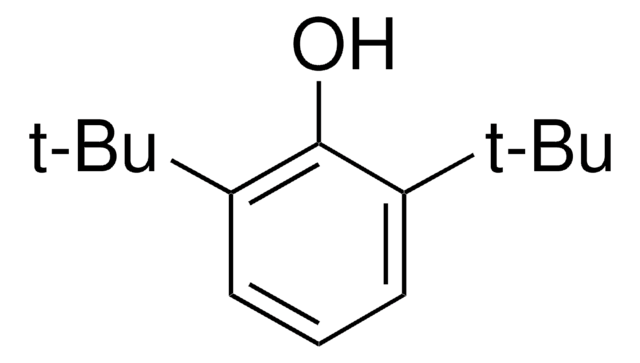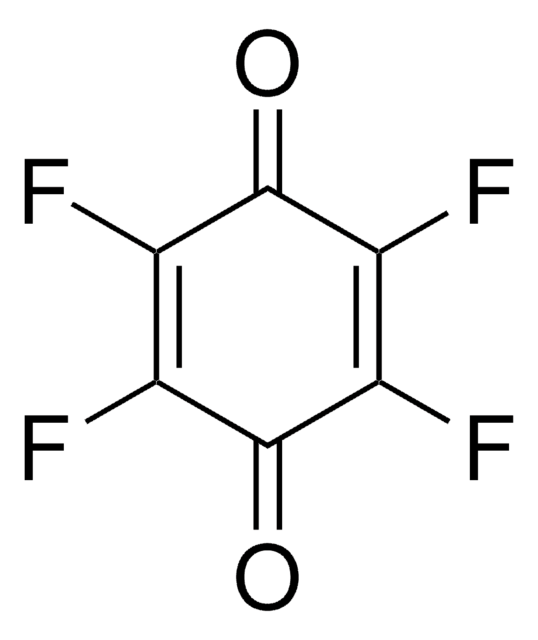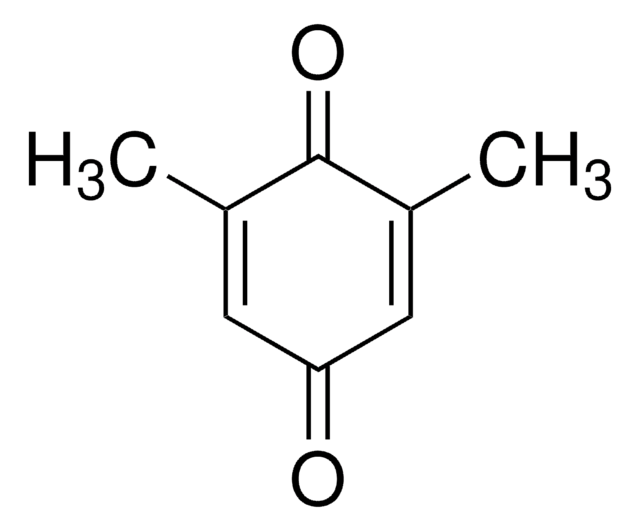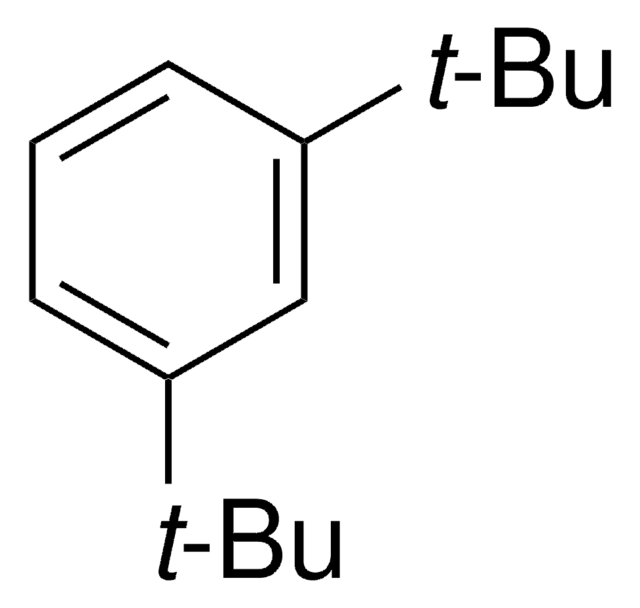Key Documents
153931
2,6-Di-tert-butyl-1,4-benzoquinone
98%
Synonim(y):
2,6-Bis(1,1-dimethylethyl)-2,5-cyclohexadiene-1,4-dione, 2,6-Bis[1,1-dimethyl ethyl]quinone, 2,6-Di-tert-butyl-2,5-cyclohexadiene-1,4-dione, 2,6-Di-tert-butylbenzoquinone, 3,5-Di-tert-butylquinone
About This Item
Polecane produkty
Poziom jakości
Próba
98%
Postać
solid
mp
65-67 °C (lit.)
ciąg SMILES
CC(C)(C)C1=CC(=O)C=C(C1=O)C(C)(C)C
InChI
1S/C14H20O2/c1-13(2,3)10-7-9(15)8-11(12(10)16)14(4,5)6/h7-8H,1-6H3
Klucz InChI
RDQSIADLBQFVMY-UHFFFAOYSA-N
Zastosowanie
Hasło ostrzegawcze
Warning
Zwroty wskazujące rodzaj zagrożenia
Zwroty wskazujące środki ostrożności
Klasyfikacja zagrożeń
Eye Irrit. 2 - Skin Irrit. 2 - STOT SE 3
Organy docelowe
Respiratory system
Kod klasy składowania
11 - Combustible Solids
Klasa zagrożenia wodnego (WGK)
WGK 3
Temperatura zapłonu (°F)
Not applicable
Temperatura zapłonu (°C)
Not applicable
Środki ochrony indywidualnej
dust mask type N95 (US), Eyeshields, Gloves
Wybierz jedną z najnowszych wersji:
Masz już ten produkt?
Dokumenty związane z niedawno zakupionymi produktami zostały zamieszczone w Bibliotece dokumentów.
Klienci oglądali również te produkty
Nasz zespół naukowców ma doświadczenie we wszystkich obszarach badań, w tym w naukach przyrodniczych, materiałoznawstwie, syntezie chemicznej, chromatografii, analityce i wielu innych dziedzinach.
Skontaktuj się z zespołem ds. pomocy technicznej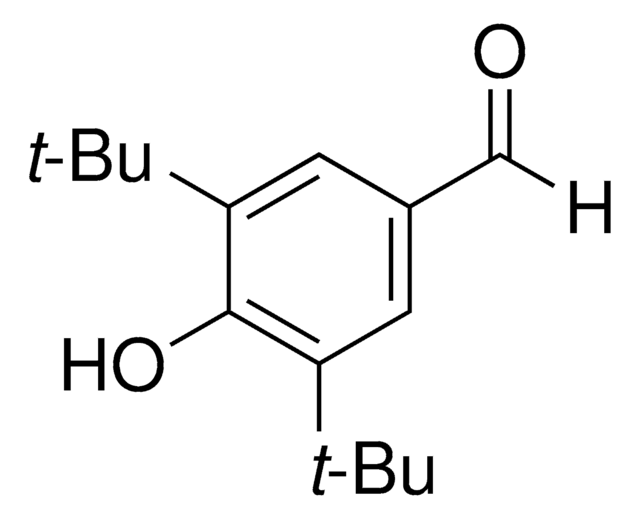

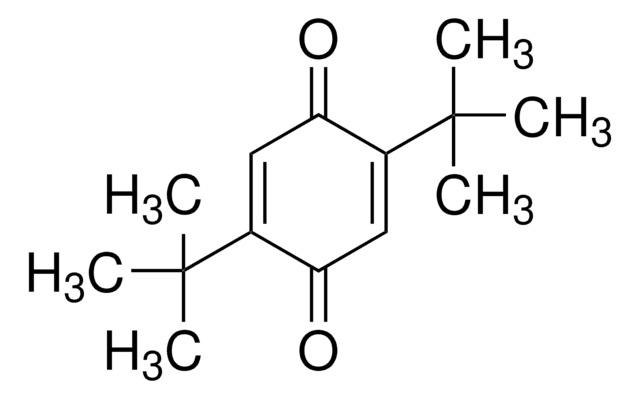
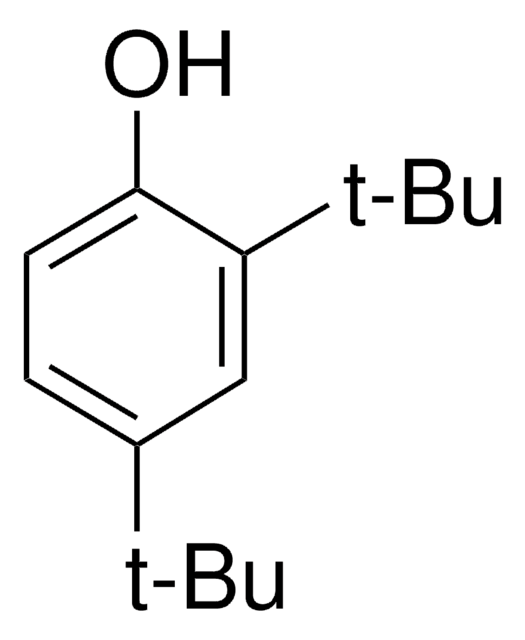
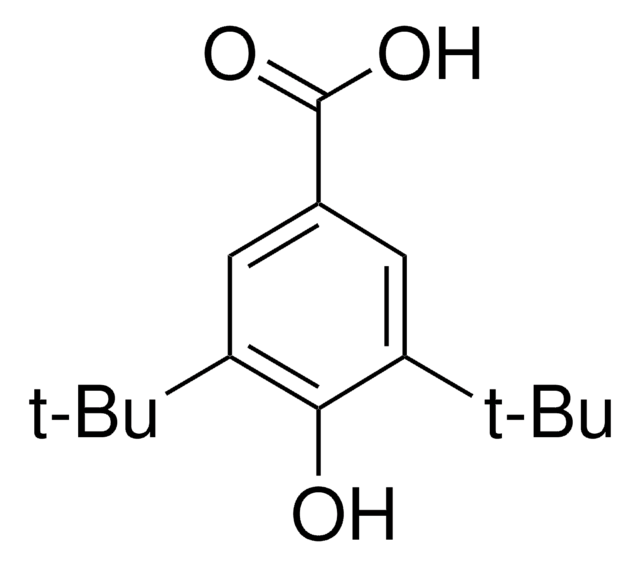

![7,9-Di-tert-butyl-1-oxaspiro[4.5]deca-6,9-diene-2,8-dione certified reference material, TraceCERT®, Manufactured by: Sigma-Aldrich Production GmbH, Switzerland](/deepweb/assets/sigmaaldrich/product/structures/294/930/cd996125-79d8-4b2f-885c-f43d19084fc0/640/cd996125-79d8-4b2f-885c-f43d19084fc0.png)
